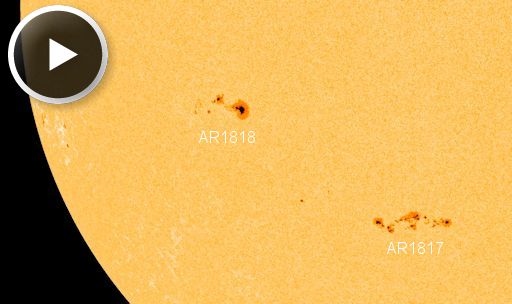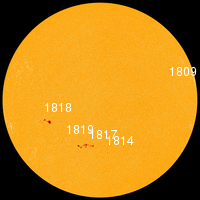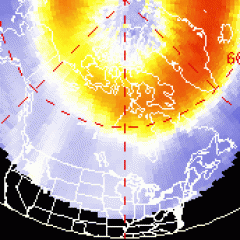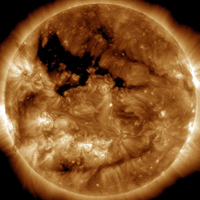PERSEIDS SLOWLY SUBSIDING: The Perseid meteor shower, which peaked on August 12-13 with as many as 120 meteors per hour, is slowly subsiding as Earth exits the debris stream of parent comet 109P/Swift-Tuttle. Sky watchers should nevertheless remain alert for meteors tonight between midnight and sunrise. It will take several days for the Perseid rate to drop to zero. [photo gallery] [meteor radar]
INCREASING CHANCE OF FLARES: Two new sunspots are growing rapidly in the sun's southern hemisphere. One of them, AR1817, is directly facing Earth and poses a threat for X-class solar flares. A movie from NASA's Solar Dynamics Observatory shows the sunspot's development over the past 48 hours:
AR1817 has a 'beta-gamma-delta' magnetic field that harbors energy for strong eruptions. NOAA forecasters estimate a 30% chance of M-class flares and a 5% chance of X-class flares on August 13th. Solar flare alerts: text, voice.

Solar wind
speed: 411.1 km/sec
density: 1.8 protons/cm3
explanation | more data
Updated: Today at 1626 UT
X-ray Solar Flares
6-hr max: C2 1146 UT Aug13
24-hr: C2 1146 UT Aug13
explanation | more data
Updated: Today at: 1600 UT
![]()
Daily Sun: 13 Aug 13
Sunspots AR1817 and AR1818 pose a growing threat for M- and X-class solar flares. Credit: SDO/HMI
![]()
Sunspot number: 85
What is the sunspot number?
Updated 13 Aug 2013
Spotless Days
Current Stretch: 0 days
2013 total: 0 days (0%)
2012 total: 0 days (0%)
2011 total: 2 days (<1%)
2010 total: 51 days (14%)
2009 total: 260 days (71%)
Since 2004: 821 days
Typical Solar Min: 486 days
Update 13 Aug 2013
The Radio Sun
10.7 cm flux: 114 sfu
explanation | more data
Updated 13 Aug 2013
![]()
Current Auroral Oval:
Switch to: Europe, USA, New Zealand, Antarctica
Credit: NOAA/POES
![]()
Planetary K-index
Now: Kp= 1 quiet
24-hr max: Kp= 3 quiet
explanation | more data
Interplanetary Mag. Field
Btotal: 9.1 nT
Bz: 6.6 nT north
explanation | more data
Updated: Today at 1627 UT
![]()
Coronal Holes: 13 Aug 13
Solar wind flowing from this coronal hole should reach Earth on August 16-16. Credit: SDO/AIA.





